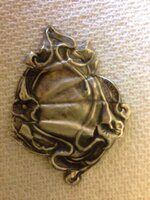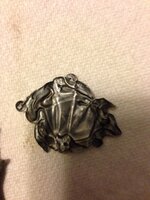redelf12
Jr. Member
- Oct 5, 2013
- 66
- 14
- Detector(s) used
- Minelab xterra 505 / old bounty hunter quick draw
- Primary Interest:
- Metal Detecting
Found today not sure what it is? made of sterling actually says it on top if you look at it...anyone know
Sent from my iPhone from redelf12
Sent from my iPhone from redelf12





 ) I agree with you. It looks like a piece that would have been on a Chatelaine. You're right on the time too as being Art Deco.
) I agree with you. It looks like a piece that would have been on a Chatelaine. You're right on the time too as being Art Deco.







